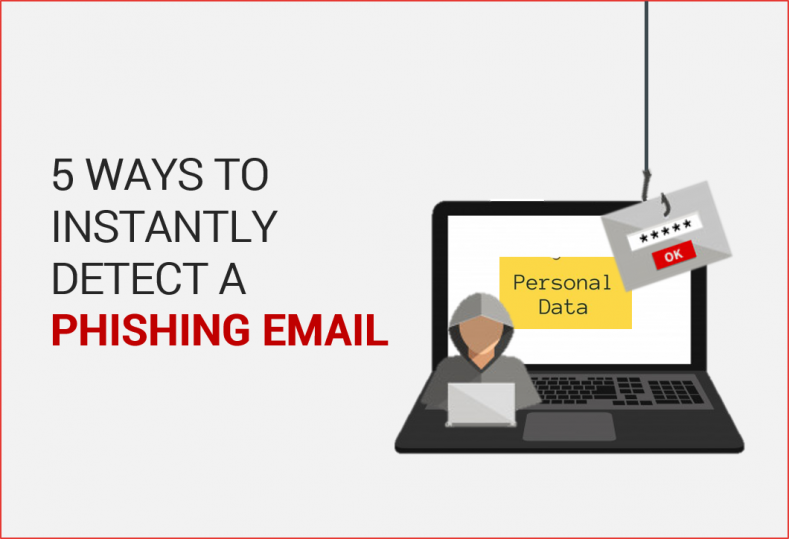5 ways to instantly detect a phishing email and save yourself from phishing attack

Phishing is a fraudulent activity to trick you into revealing your personal and confidential information. This information usually includes bank account details, net banking details, credit/debit card numbers, login ID and passwords.
Every day, countless people become unsuspecting victims of phishing attacks. With cyber criminals adopting sophisticated modes of phishing attacks, it can often be difficult for people to differentiate between a fraud and legitimate email message.
While there is no thumb rule as such for making this differentiation since, the type of phishing email may vary, there are a couple of ways to help you spot a phishing email:
#1 Spelling mistakes and poor grammar
One of the simplest ways of spotting a phishing email is to check for grammatical and spelling errors. An email sent by a legitimate company would obviously go through its fair share of proof reading and legal compliances. Thus, an email containing too many spelling mistakes and grammatical errors is a clear indication that it’s a phishing email.
#2 Mismatched domain name and email address
A commonly observed thing in most phishing emails is a mismatched domain name and email address. Hackers, in an attempt to mislead people often times make use of company names that make the email look genuine. However, a close examination of the email address or URL is enough to show you the minor variation intended specifically to mislead you into clicking the link. A good way to cross-check the validity of such suspicious emails, is to hover over the URL to see the actual address.
#3 Suspicious attachment
We receive numerous emails on a daily basis containing attachments for registration, subscription, feedback, etc. However, be absolutely wary of emails coming out of the blue that may contain suspicious attachments.
In a recent detection by Quick Heal Security Labs, it was observed that a malicious PDF file was being sent to users as an attachment via a phishing mail. While the PDF file looked like a regular document, it was actually a malicious file intended to lure the user into opening the document, to launch an Android malware into their device.
#4 Request for personal information
Regardless of how authentic or official an email may look like, it’s always a red flag if the message asks you to share personal information. As for banks, most of them make it a point to send out frequent advisory messages, asking customers to NEVER share any personal details like credit card number, password, OTP, security question, etc.
#5 Offers that look too good to be true
Well, who doesn’t like discounts and offers but, the ones that look too good to be true could be a trap! Often times we receive emails announcing our name as the grand winner of a lottery. WAIT! Before you click on any such link to claim your reward, think whether you had even brought a lottery ticket or not.
Emails, social media posts, advertisements, etc. have become some of the favourite platforms for cyber criminals to launch phishing attacks since, these are part of our daily life today.
Thus, if you ever come across an email, attachment or post that looks suspicious… DELETE IT!
No Comments, Be The First!